Every time we have an article about wooden houses there is at least one person who comments apocalyptically about the house's flaming end. And yet, wood frame houses are being built all over the world, not just here. What's more, in other parts of the world wood seems to be increasingly replacing traditional building materials. We're no longer just talking about houses, but multi-storey buildings or impressive civil and industrial structures. I think that those who build airports, hotels or concert halls on wooden structures have solid arguments and don't take the risk of appearing in prime-time news just for the sake of building with wood.
We spoke to specialists at Dimmer, builder of wooden houses in Comănești. They told us about how to obtain the beams used in the structure, about fireproofing treatments and about the regulations that must be respected in order to be able to build both in the country and in Europe. They also gave us information about the behavior of wood in fire on the blog.
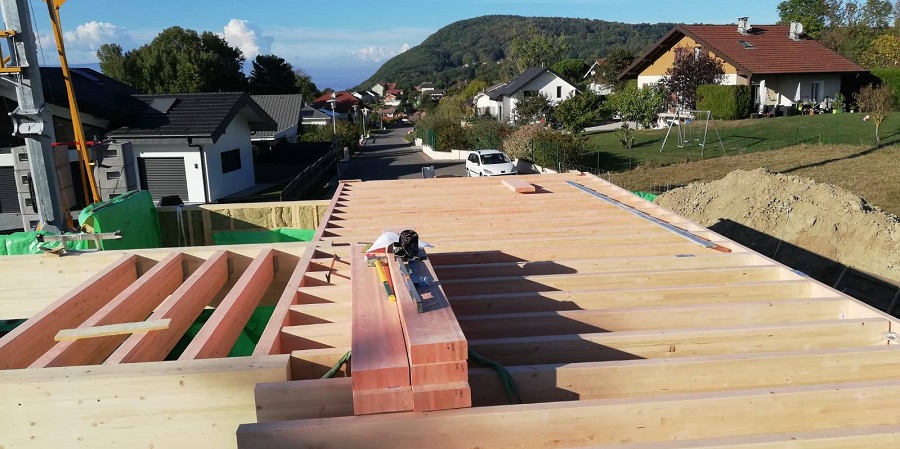
EU rules on the construction of timber frame houses
Firms that have been building houses on wooden structures for years, at home and in European countries, do not build haphazardly. There are standards and regulations that must be followed so that those who live in them or use them are safe. The condition for having a well-made and safe house is to work with specialized firms that respect the standards in force and guarantee the work done.
Standard EN 1995 or Eurocode 5: Design of timber structures, E5 for short, is the European document governing timber construction. Decision 2000/367/EC is another European reference document that establishes material performance classes for fire protection performance.
Documents valid at EC level are backed up by national rules which take precedence if they are more restrictive. Everything is designed for the benefit of the beneficiary, which is why tougher, more drastic regulations are always chosen. In Romania, too, building on wooden structures is regulated by law, with Laws 307/2006, 212/1997 and OG 114/2000 being the ones that must be complied with. A very important regulation for fire safety is P188 of 1999 updated.
Fire behavior of wood compared to steel and concrete
By studying wood burning, specialists have shown that at temperatures of 225-250ºC developed by a gas flame, wood starts to burn, but the burning stops when the flame is removed. From 250ºC up to 270ºC, the wood burns even if the flame is removed, and in the temperature range 330-520ºC, it burns spontaneously. Dense, damp wood burns more slowly than light, dry wood.
The structural elements of wooden houses are made of laminated beams. They are dense, heavy and massive, with higher ignition and burning temperatures. The beams are made by gluing several layers of wood on top of each other, which makes it difficult to burn. The layer of charcoal formed on the outside as the wood burns acts as a very effective thermal insulator. The wood itself is a very good thermal insulator, so if the outside temperature of the burnt wood is 1000°C, the inside of the beam will be only 40°C. This is why buildings with very thick timber structural elements do not collapse easily when burning. The fall occurs just when the unfinished timber section is very low and can no longer support the weight of the construction.
A role in slowing and even stopping the spread of fire in laminated wood (lamellar beams, CLT) are fireproofing treatments and the adhesive used for gluing. Impregnating wood with solutions that stop burning (sodium silicatefor example) and the use of adhesives with the ability to stop the fire progressing inside the beam can cause the beam to not ignite or to burn very little and only on the surface.
Unlike wood, the steel used in structural elements is much less fire-resistant. Wood burns gradually, from the outside in, with the unburned part continuing to support the load. However, steel changes its mechanical characteristics at temperatures above 200ºC, and above 600ºC it no longer takes loads and there is a real danger of collapse. In reinforced concrete, the mechanical strength is determined by the thickness of the concrete layer that protects the metal bars inside from fire. But in concrete, heat transfer is faster than in wood, and the heat quickly reaches the metal. At high temperatures the metal loses its strength and can no longer support the large amount of concrete, collapsing. In article on the Dimmer website is an old photograph taken after a fire. The image captures steel beams 'bent' by the high temperature over a standing burnt wooden beam.
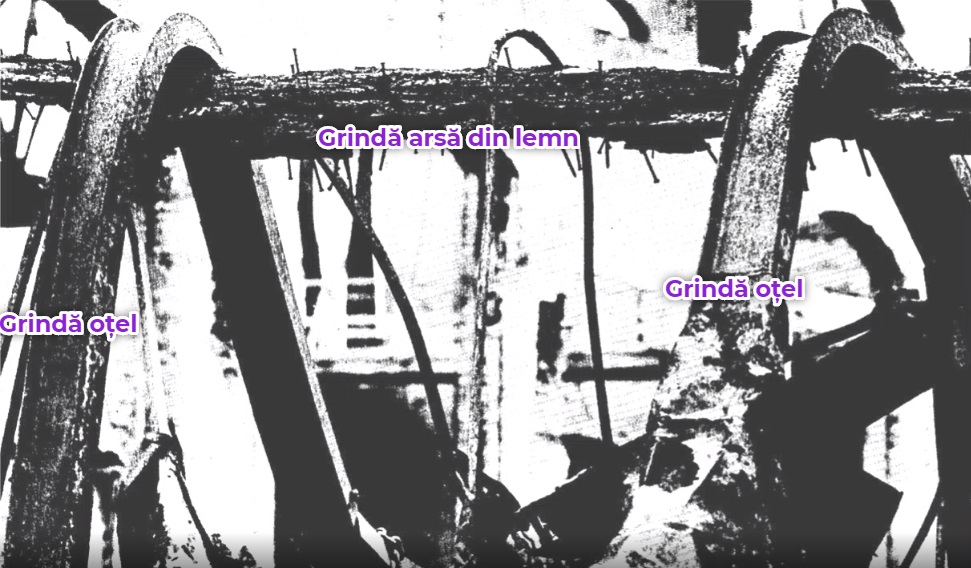
Fire behavior of prefabricated walls
Prefabricated walls are made of several layers of materials which can delay or even stop burning. Basaltic wool is a commonly used insulator for prefabricated walls because it does not burn. In addition to its very good thermal insulating properties, basaltic wool resists for 2 hours at 1000ºC, after which it begins to melt. Although it may seem hard to believe, wood fiber insulation panels are also very fire resistant. The fire test, which you can see heredemonstrates.
According to data published by the ISU, a quarter of fires occur in dwellings, whether made of concrete, brick or wood. Electrical faults are the main cause, followed by carelessness and unclean chimneys. It's not the walls that catch fire first, but the furniture, because varnish, if not fireproof, exacerbates the burn.
Wood fireproofing treatments
The wood used in wooden house structures is treated to increase its strength. Special substances are used to make it resistant to insects, moisture, fungus, mold and fire. After being treated with fire retardants, the wood becomes more fire-resistant, the spread of fire slows down and the firewood is easier to put out. The elements are treated after the mechanical processing has been completed so that the wood does not undergo any further transformations that would reduce the effectiveness of the fire retardant. Treatment can be by dipping, brushing or spraying. Sometimes wood elements are treated under pressure in autoclaves, making the wood denser and tougher, and therefore more resistant to fire.
Timber house manufacturers also use mechanical processing techniques that are proven to slow the spread of fire. For example, posts and wall supports do not have straight edges. The profile is round because the spread of fire on such a profile is much slower than on a straight edge.
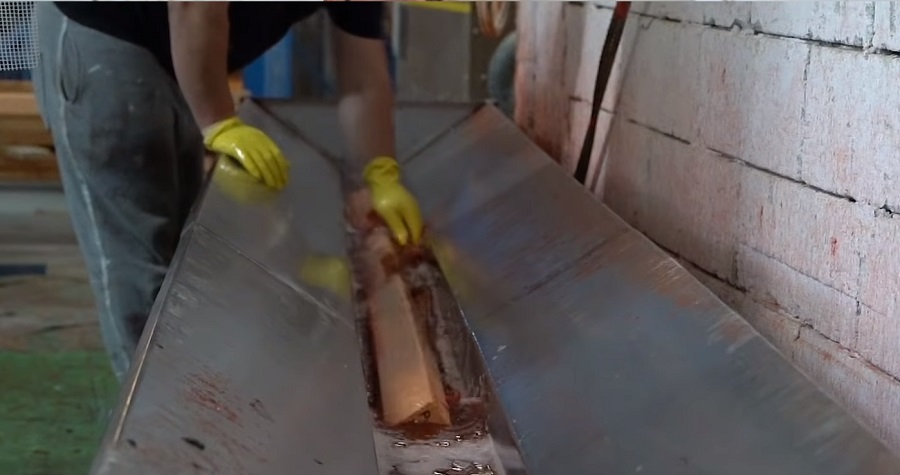
More and more buildings around the world are being built on wooden structures, and people's mentalities are changing. One example is the UK. Until 1996, the rules were very strict and tall wooden buildings were not allowed because, over the years, England has had fires that have destroyed entire cities. Now, in London, there is a functional 8-storey, all-timbered building. The strength of industrialized wood and the fireproofing treatments it undergoes have led to a change in legislation and a renewed confidence in wood.

























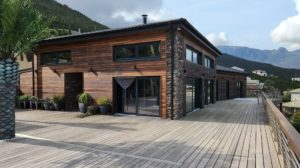

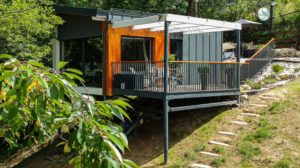


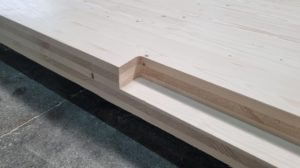
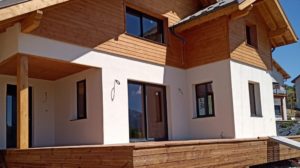
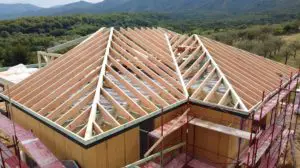



Add comment